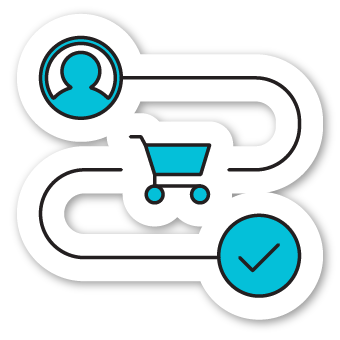
Tips for using first-party data to build a strategy for your business
First-Party Data is a term used to describe the data that companies gather from their customers or visitors. Often, this data is collected through a form or survey on a website, where consumers provide information for whatever reason for creating an account, signing up for email updates, filling out a survey, and submitting their contact details. First-party data is more valuable than Third Party Data because it’s uniquely your audience.
How do you use first-party data in your business?
1. To collect data
First-party data is a company’s collection of data from its customers and visitors. The data collected by a company can be used for direct mail campaigns, digital marketing initiatives, and lead-generation programs. It is also used to help with customer service, product development, and collection of payment information.
The data collected can range from demographic information such as age, gender, income level, or purchasing habits to location-specific preferences. The more accurate the data is when assembled, the more valuable it will be for your business’ various needs.
2. Analyze customer behavior
Once you have collected the data, the next step is to analyze what it means for your business. The data is valuable for any company if it is used correctly and results in increased profits. Some companies might use first-party data to determine what products will be the most popular or which ones should be discontinued. Others may use the data to predict future sales or trends.
3. Check the customer’s trends
Another way to use first-party data is to check your customer’s trends. You can use data culled from your customer’s previous purchases or online activities to determine where they’re going next. Rather than constantly sending out emails, you should direct customers toward your Facebook or Twitter accounts instead. You can also use the data for product development and customer service purposes. The more knowledge you have about your customers, the better off you’ll be in the long run.
4. Consider using a customer’s data platform
The last way to use first-party data is to partner with a customer data platform, which takes the guessing out of which products or services you should develop next. Companies can use a tool such as Experian’s Insights Suite to check their customers’ contact information and scores and see if they match up with any other customers in the same industry. They can also look at what kind of spending trends are happening in the market and how popular certain products are, so they can determine what your competitors are doing.
Tips for building a first-party data strategy

Create an omnichannel marketing plan
By creating an omnichannel marketing plan, you can build a comprehensive marketing plan that provides your customers with the information they need and when they need it. You can also use this to analyze customer data, using the information gleaned to determine what products are popular with their demographic and in which geographical areas.

Retarget the browse
The best way to use first-party data is to retarget your browse. This allows you to market directly to people who have already expressed an interest in your business by visiting its website. Companies can then use retargeted ads on other websites that their customers visit so that they can drive them back to the company’s website.

Better understand your customers’ journey
Understanding your customers’ journey is essential to determine the most effective way of marketing. This means determining whether they visit your website via a search engine, an app, or a third-party website. Knowing what factors are important in their decision-making when purchasing a product is also helpful. By identifying these factors, companies can create more targeted ad campaigns that draw customers back to the company’s website so they can make future purchases easier.

Drive loyalty with existing customers
The best way to use first-party data is by driving loyalty with existing customers. The company can encourage customers to buy more products or services from its website by providing promotions and coupons. The company can also collect information about the customer’s preferences, so they can recognize what other products would be most profitable for them to sell.
Why you should regularly audit your first-party data & how to do it

Save time & money
It is vital to audit your first-party data to ensure it is regularly up-to-date. If you need more information, it will be easier to create a marketing campaign, so you may need to make some changes that could result in better customer relations. It’s also essential to know what kind of data you have, how accurate it is, and whether it will change over time.

Improve customer relations
If you regularly check your first-party data, you can begin to improve your customer relations. You can use the info to send more targeted emails and manage your marketing campaigns more effectively. This way, you will be able to cut down on wasted time and money by making sure your strategy is the most efficient one it can be.
Track the right metrics
It’s also important to regularly audit your first-party data because it will help you track the right metrics. This is extremely useful if you are trying to increase your conversion rate because it will allow you to gather the data needed to determine and fix the problem. This can also help if your customer retention rate is declining because you can look at which of your customers are leaving and what factors may be causing them to do so.
*Please note this article does not constitute legal advice on how to collect first-party data. The information provided may only be applicable in some situations and should be acted upon with specific legal advice.
Conclusion
Are you interested to learn more about First-Party Data? Contact us today. We are happy to hear from you!